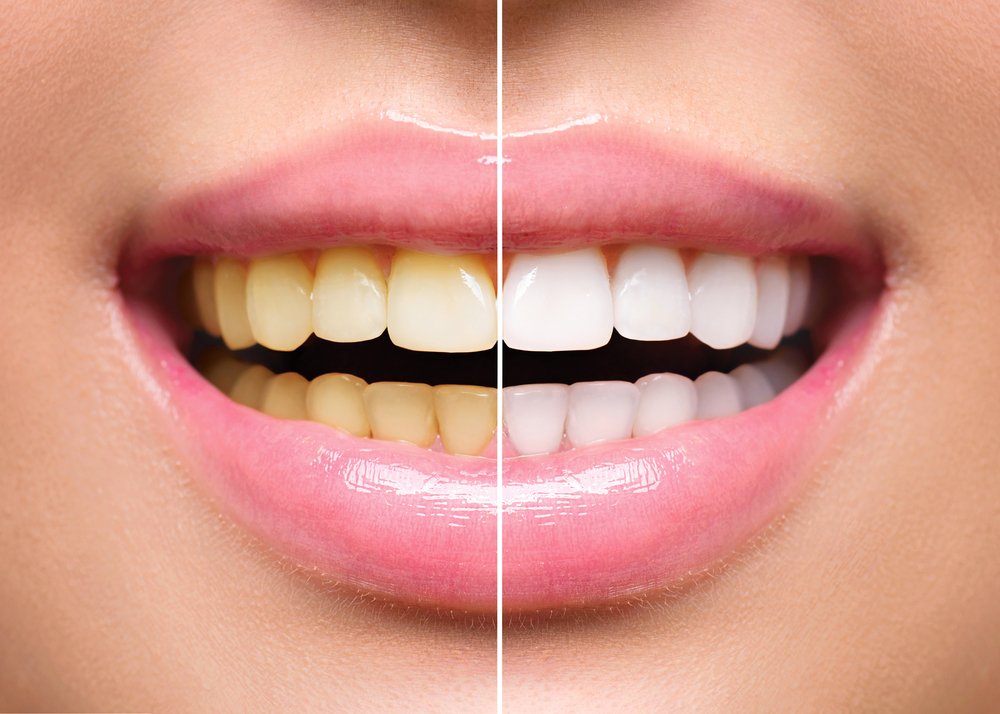Have you ever wondered why some people naturally have brighter smiles while others struggle with yellowing teeth despite brushing regularly? Tooth discoloration is a common concern and can be influenced by everything from genetics and aging to lifestyle habits and oral hygiene. Fortunately, modern cosmetic dentistry offers a variety of safe and effective solutions to restore a whiter, more confident smile. In this blog, we’ll explore the reasons behind yellow teeth and the best ways to fix them, whether you’re looking for at-home improvements or professional treatments.
In This Blog:
- Common Causes of Yellow Teeth
- At-Home Whitening Options
- Professional Whitening Treatments
- Cosmetic Procedures for Stubborn Discoloration
- How to Prevent Yellowing
- When to See a Cosmetic Dentist
Common Causes of Yellow Teeth
To understand how to whiten your teeth effectively, it helps to know what’s causing the discoloration in the first place. Several factors can contribute to yellow or stained teeth, including:
Genetics and Natural Tooth Color
Some people are simply born with teeth that are more yellow in tone. This can be due to a higher ratio of dentin (the yellowish layer beneath enamel) or naturally thinner enamel, which allows the dentin color to show through more prominently.
Diet and Lifestyle Habits
Regular consumption of deeply pigmented foods and drinks—such as coffee, tea, red wine, curry, soy sauce, and berries—can stain teeth over time. Smoking or using tobacco products can also lead to significant yellowing and brown stains on the enamel.
Poor Oral Hygiene
Inadequate brushing and flossing allow plaque and tartar to build up, which can dull your smile. Without professional cleanings, these deposits harden and contribute to discoloration.
Aging
As we age, enamel naturally wears down, making the yellow dentin underneath more visible. This process can make even healthy teeth look darker or more yellow over time.
Medications and Medical Conditions
Certain medications, especially tetracycline antibiotics taken during childhood, can cause intrinsic stains that are deep within the tooth. Cancer treatments like chemotherapy and radiation may also lead to discoloration. Additionally, excessive fluoride exposure during early tooth development (fluorosis) can result in mottled or stained teeth.
Dental Materials
Older metal fillings, especially amalgam restorations, can sometimes cast a gray or dark hue over surrounding tooth enamel.
At-Home Whitening Options
If your discoloration is mild, you may benefit from whitening products you can use at home. These include:
- Whitening Toothpastes: These contain mild abrasives and low-level bleaching agents to remove surface stains. They can be helpful for maintaining whiteness but are limited in their ability to brighten deeper discoloration.
- Whitening Strips and Gels: Available over the counter, these products typically use hydrogen peroxide or carbamide peroxide to bleach the enamel. Results can vary based on the strength of the product and consistency of use.
- Whitening Trays (Generic Kits): These come with a one-size-fits-all tray and bleaching gel. While effective for some users, they lack the precision of custom trays and can sometimes cause gum irritation or uneven whitening.
While at-home products can be cost-effective and convenient, they usually work best for surface stains rather than deep, intrinsic discoloration. Always follow directions carefully and consult your dentist if you have sensitivity or questions about safety.
Professional Whitening Treatments
If over-the-counter options aren’t giving you the results you want, professional whitening treatments offer a more powerful and reliable solution. Performed under the supervision of a dentist, these treatments use higher concentrations of bleaching agents to achieve noticeable whitening safely and quickly.
- In-Office Whitening: This is one of the fastest ways to brighten your smile, often delivering results in a single visit. A protective barrier is applied to your gums before the dentist applies a concentrated bleaching gel, which may be activated with a special light for enhanced results.
- Take-Home Whitening Kits: Custom trays made to fit your teeth are filled with professional-strength whitening gel. These kits provide even whitening with less risk of gum irritation and are ideal for those who prefer to whiten gradually at home.
Professional whitening is ideal for extrinsic stains caused by food, drinks, and tobacco. For intrinsic stains (inside the tooth), additional cosmetic options may be necessary.
Cosmetic Procedures for Stubborn Discoloration
Some stains are too deep or resistant for even professional whitening to resolve. In these cases, cosmetic dental treatments can provide a long-lasting and transformative solution:
- Porcelain Veneers: Thin shells of ceramic are bonded to the front of the teeth to mask discoloration, reshape the tooth, and create a uniform, white appearance.
- Dental Bonding: A tooth-colored resin is applied and shaped to cover stains and improve aesthetics. Bonding is a more affordable alternative to veneers but may not last as long.
- Crowns: For severely discolored or damaged teeth, a crown can restore both appearance and function by completely covering the tooth.
These options not only address deep discoloration but can also enhance the overall look of your smile, correcting shape and spacing issues along the way.
How to Prevent Yellowing
Whether you’ve recently brightened your smile or are trying to maintain your natural tooth color, prevention is key. Here are some practical tips to keep your teeth looking their best:
- Brush and Floss Daily: Maintain strong oral hygiene habits to remove plaque and prevent staining.
- Use a Straw for Dark Beverages: Drinking coffee, tea, or soda through a straw minimizes contact with your teeth.
- Rinse After Eating Staining Foods: Swishing with water after meals helps wash away pigments before they settle into enamel.
- Avoid Tobacco Products: Smoking and chewing tobacco are leading causes of yellow and brown stains.
- Visit Your Dentist Regularly: Professional cleanings help remove surface stains and detect problems early.
Consistent care goes a long way in preserving the brightness of your smile.
When to See a Cosmetic Dentist
Not all tooth discoloration can be fixed with toothpaste or whitening strips. If your yellowing is persistent, uneven, or combined with other dental concerns like chips or gaps, it’s time to consult a cosmetic dentist. They can evaluate:
- The cause and type of discoloration
- Whether stains are surface-level or deep within the tooth
- Your overall oral health and suitability for whitening or other treatments
A personalized treatment plan ensures you get safe, effective, and long-lasting results that are tailored to your needs and goals.
Conclusion
Yellow teeth are a common concern, but you don’t have to settle for a dull smile. Whether your discoloration is caused by genetics, lifestyle habits, or aging, there are effective solutions available, from simple at-home care to advanced cosmetic procedures. With guidance from a cosmetic dentist, you can achieve a whiter, healthier-looking smile that boosts your confidence and enhances your appearance.
At Smile Drs., we specialize in creating beautiful smiles using customized cosmetic treatments that deliver real results. If you’re ready to brighten your smile and feel more confident, schedule a consultation with our team today. Let’s find the perfect solution to help you love your smile again.



